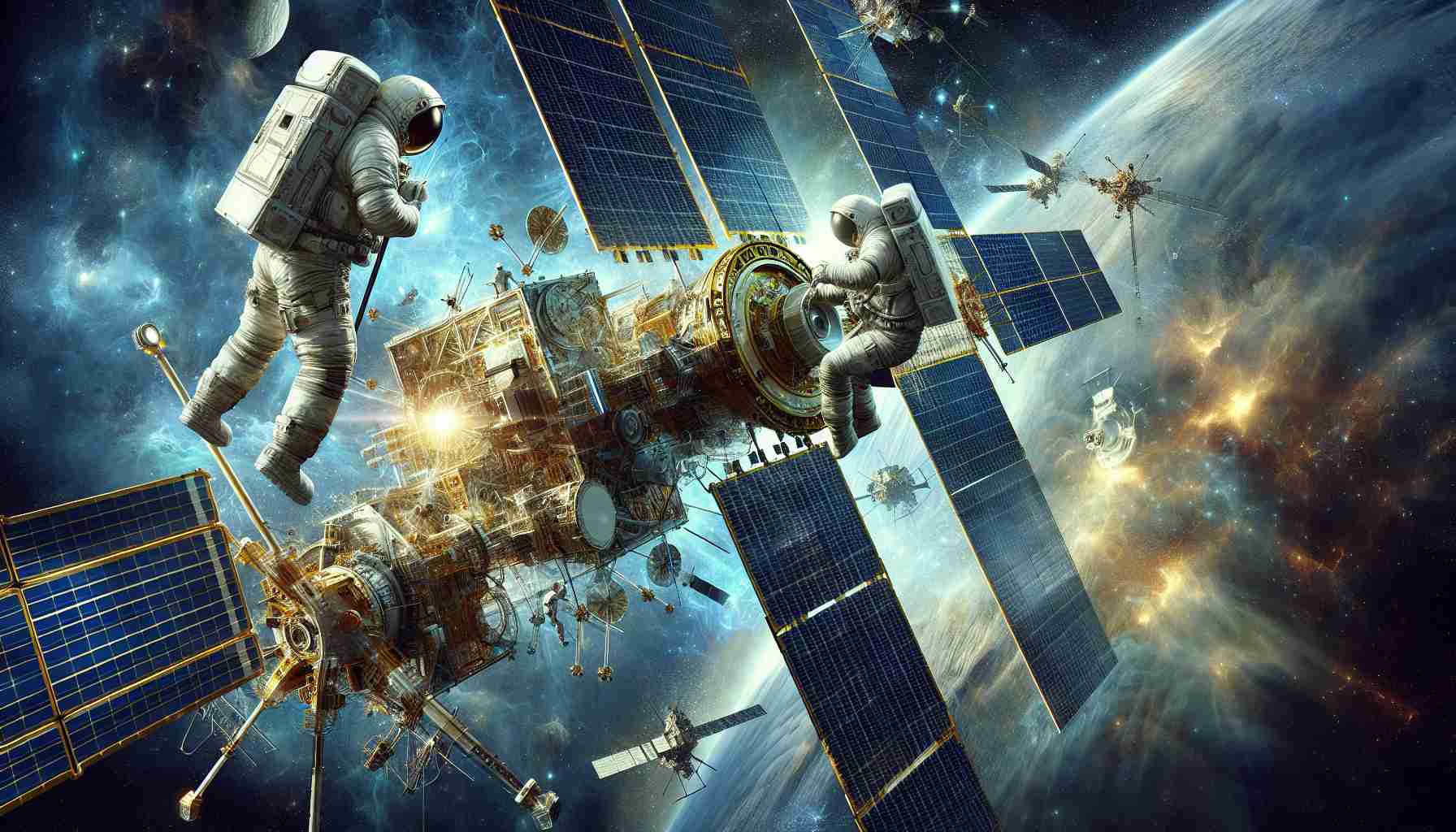Revolutionizing Space Maintenance
Imagine a world where satellites are not disposed of after a single use but are instead serviced and rejuvenated to continue their vital functions in orbit. This vision is becoming a reality with a groundbreaking initiative set to transform the way we interact with satellites in space.
Extending Satellite Lifespan
A pioneering project is underway to revolutionize space maintenance by extending the operational life of satellites and ensuring their safe disposal to mitigate the threat of space debris. The initiative aims to address the growing issue of cosmic traffic congestion caused by defunct satellites circling the Earth.
A New Approach to Space Debris
The current scenario sees over 34,000 fragments of space junk cluttering Earth’s orbit, posing a significant risk of collisions with operational satellites and even endangering life on the planet. By adopting innovative strategies for satellite servicing and debris removal, the space industry is taking a crucial step towards ensuring a sustainable and clutter-free orbital environment.
Collaborative Efforts for Space Sustainability
In addition to the groundbreaking satellite servicing mission, collaborative efforts between space agencies and startups are paving the way for a circular economy in space. Initiatives like ClearSpace-1, focused on actively removing space debris, underscore Europe’s commitment to fostering a sustainable and secure orbital ecosystem.
Embracing a New Era in Space Technology
As the space industry embarks on a new era of satellite maintenance and debris mitigation, the possibilities for sustainable space exploration are becoming increasingly tangible. With innovative projects on the horizon, the vision of a clutter-free and secure orbital environment is within reach.
Additional Facts:
– One key aspect of satellite maintenance that is not explicitly mentioned in the article is the use of robotics for satellite servicing. Advances in robotics technology have enabled the development of autonomous systems that can perform complex tasks such as refueling, repairs, and upgrades on satellites in orbit.
– There is a growing trend towards the development of satellite servicing vehicles that are specifically designed to rendezvous and dock with existing satellites in space. These servicing vehicles can perform a wide range of tasks, from extending the lifespan of operational satellites to removing defunct satellites from orbit.
Most Important Questions:
1. How can satellite maintenance initiatives contribute to reducing the amount of space debris in Earth’s orbit?
2. What are the technical challenges associated with servicing satellites in space, and how are they being addressed?
3. What regulatory frameworks are needed to ensure the safe operation of satellite servicing missions and the responsible disposal of space debris?
Key Challenges/Controversies:
– One key challenge facing satellite maintenance initiatives is the development of standardized interfaces and protocols that can be used across different satellite platforms. Lack of standardization can complicate the process of servicing satellites from multiple manufacturers.
– There may be concerns about the potential militarization of satellite servicing technologies and the associated risks of using such capabilities for malicious purposes, such as satellite interference or sabotage.
Advantages:
– Extending the operational lifespan of satellites through maintenance and servicing can help optimize the use of valuable resources in space and reduce the frequency of satellite launches.
– Satellite servicing initiatives can contribute to the overall sustainability of space activities by minimizing the amount of space debris and reducing the risk of collisions in orbit.
Disadvantages:
– The upfront investment required for developing and deploying satellite servicing technologies can be substantial, which may pose financial barriers for certain stakeholders in the space industry.
– There could be concerns about the environmental impact of satellite maintenance activities, particularly in terms of generating additional space debris during servicing operations.



